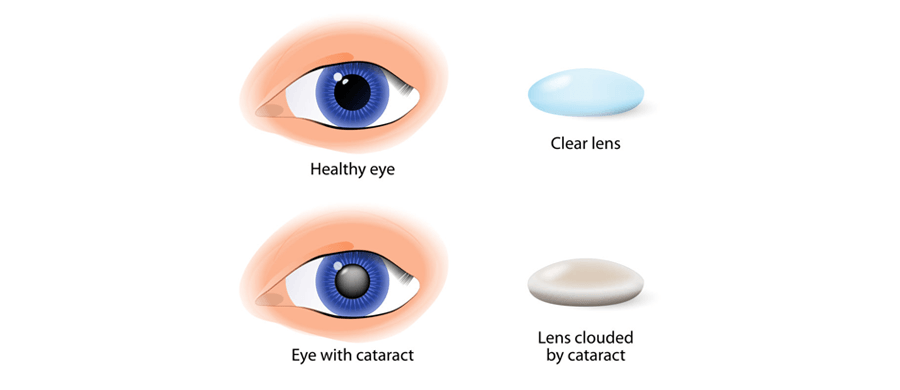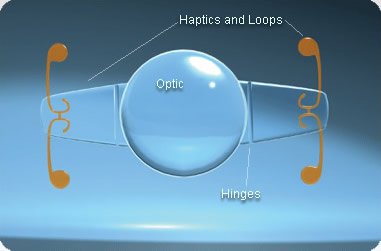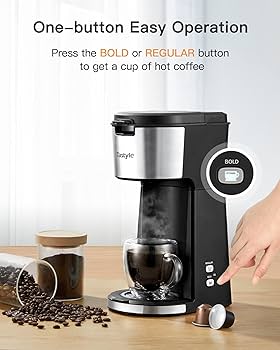What Is a Monofocal Lens? Deep Dive Into Its Features, Benefits, And Applications
Introduction
The world of ophthalmology is filled with myriad lens options, each serving different visual requirements. Among this variety, monofocal lenses have emerged as a popular choice in several applications, owing to their unique features. This article delves deep into the concept of monofocal lenses, including what they are, how they are engineered, their uses, benefits, drawbacks, and comparison with multifocal lenses. It answers FAQs that will give you a 360-degree understanding of this optical device.
What Is a Monofocal Lens?
Featuring a single focus point, a monofocal lens is an optical tool used to optimize visual clarity at either near, intermediate, or far distances. The term 'monofocal' comes from Latin roots ‘mono’, meaning 'one', and 'focal', meaning 'focus'. Here's a quick look into the details:
- Functioning: Designed to focus light onto a single point, monofocal lenses assist in clear vision at a single distance. Depending on the user's specific needs, these distances could be near (for reading), intermediate (for working at a computer), or far (for driving, watching T.V., and more).

- Composition: Commonly made of durable, scratch-resistant materials such as plastic or silicon-based substances, they are made to last and offer comfort to users.
- Applications: Featuring prominently in eyewear such as glasses and contact lenses, they are designed to aid in specific tasks. However, their use has significantly increased in intraocular lenses (IOLs), which are implanted during cataract surgery to replace the eye's natural lens.
- Versatility v/s Singularity: The unique feature of monofocal lenses delivering optimized vision for a particular distance contrasts with the versatility of multifocal lenses, which provide clear sight for multiple distances.
In understanding the world of monofocal lenses, it becomes evident that its tailored design offers a specific solution for dependable clarity in one's vision. Whether one opts for monofocal glasses or implants, the purpose remains to serve a singular vision range effectively.
How Is a Monofocal Lens Engineered?
Creating a monofocal lens is a meticulous process that involves precise adjustments to its curvature and thickness. The design goal is still simple and effective: to allow light to be focused on one particular point.
1. Material Selection: The choice of material for a monofocal lens typically hovers around plastic or silicon-based substances. The choice is driven by factors such as durability, scratch-resistance, and comfort to the user.
2. Manipulating the Curve: The curvature of the lens is deftly tailored to ensure light converging onto it is focused at a single point.
3. Thickness Tuning: Apart from the curvature, the thickness of the lens is also manipulated to fine-tune the focusing feature.
4. The Role of Technology: The crafting of these lenses isn't a manual task. Advanced computer-guided machines have an integral role to play in this process. They ensure the lenses are accurately adjusted to the precise prescription.
5. Aesthetics and Comfort: The lenses are crafted to be thin and lightweight. This is to ensure they are less noticeable when used in glasses and comfortable when inserted as intraocular lenses.
In essence, the engineering process behind a monofocal lens is about balancing optical performance, user comfort, and aesthetic appeal.
Where Are Monofocal Lenses Mostly Used?
Monofocal lenses play a substantial role in correcting vision across various aspects. Their design ensures clear, crisp vision at a single distance, making them versatile for different uses. Here are the primary areas where monofocal lenses truly shine:
1. Eyeglasses/Contact Lenses: Individuals who only require vision correction for specific tasks, such as reading or driving, find monofocal lenses to be a convenient solution. They offer dedicated focus to suit a particular need, enhancing visual acuity and providing crystal-clear vision.
2. Intraocular Lenses (IOLs): The use of monofocal lenses extends beyond just eyeglasses and contacts. They've carved out a significant place in the world of intraocular lenses. Monofocal IOLs are used during cataract surgeries, where they replace the eye's natural lens. These lenses are highly sought-after due to their provision of high-quality vision at a single distance, most commonly for far vision.
By combining affordability, simplicity, and the ability to provide exceptional vision quality at a specific distance, monofocal lenses have become an integral component in vision correction across these applications. Whether you need them for your eyeglasses or as an IOL, these lenses make a noteworthy difference in improving optical clarity and focus.
Exploring the Benefits & Drawbacks of Monofocal Lenses
Monofocal lenses, like any other optical tool, possess both advantageous and disadvantageous aspects. Let's delve into what they have to offer and where they might fall short:
Advantages of Monofocal Lenses:
- Single Focus Clarity: They offer a sharp and detailed vision at the distance they are set, whether near, intermediate, or far.

- Cost-effectiveness: Compared to their multifocal counterparts, monofocal lenses tend to be more affordable, making them a popular choice for budget-conscious individuals.
- Simplicity: Monofocal lenses are less complex, offering ease of adaptation for users, particularly those new to wearing glasses or contact lenses.
Disadvantages of Monofocal Lenses:
- Limited Range: The primary drawback of monofocal lenses is their limited focus range - they cannot provide clear vision at all distances. This may necessitate the need to have separate glasses for various activities, such as reading, working, and driving.
- Lack of Flexibility: Unlike multifocal lenses that allow you to shift between near and far vision, the inflexibility of monofocal lenses may present a challenge to users seeking comprehensive vision correction.
In conclusion, evaluating the strengths and weaknesses of monofocal lenses would provide a thorough assessment of your needs and ultimately guide your lens choice. Consider discussing these points with an optometrist to optimize your decision.
Monofocal versus Multifocal Lenses: How Do They Compare?
Understanding the contrasts between monofocal and multifocal lenses is crucial to make an informed choice. Here, we break down these differences based on several considerations:
- Single Focus vs. Multiple Focuses: Monofocal lenses, as their name signifies, allow for clear vision at a single distance, decided at the time of fitting. Multifocal lenses, however, accommodate multiple visual ranges - near, intermediate, and far, all in one lens.
- Cost: Monofocal lenses are typically more budget-friendly than their multifocal counterparts. The sophisticated technology used in multifocal lenses often translates to higher costs.
- Visual Quality: Monofocal lenses offer excellent clarity for the set distance. On the other hand, multifocal lenses provide vision correction for all distances but may offer slightly less sharp vision due to segmented focus points.
- Potential Visual Disturbances: Multifocal lenses could cause visual disturbances, like glare, halos or blur, especially in low light or nighttime conditions. Monofocal lenses usually don't have these issues, given their single focus point design.
In essence, the choice between monofocal and multifocal lenses mainly hinges on your unique visual needs, lifestyle preferences, and budget. Always consult your eye care professional for personalized advice to best suit your visual requirements.
Conclusion
In conclusion, monofocal lenses, with their singular focus point, offer a simple and effective solution for vision correction in specific fields. Whether you need glasses for reading or require an IOL, understanding your needs, the advantages and disadvantages of monofocal lenses will help you make an informed choice. Discussing with your optometrist is essential before deciding on any lens.
Related FAQs about what is monofocal lens
What is the principle behind the operation of monofocal lenses?
The principle behind monofocal lenses lies in their design to focus light onto a single point, enabling clear vision at a specific distance, either near, intermediate, or far. The curvature and thickness of these lenses are carefully tailored to establish this focused vision.
How do monofocal and multifocal lenses affect vision differently?
Monofocal lenses enhance vision at a single chosen distance, either near, intermediate or far. On the other hand, multifocal lenses are designed to assist with vision at multiple distances. They have different areas dedicated to distant, intermediate, and close-up vision.
Why would someone choose a monofocal lens over a multifocal lens?
Individuals may prefer monofocal lenses for their simplicity, cost-effectiveness, and the high-quality vision they offer at a specific distance. On the other hand, using multifocal lenses might introduce specific visual disturbances like glare or reduced contrast sensitivity.


